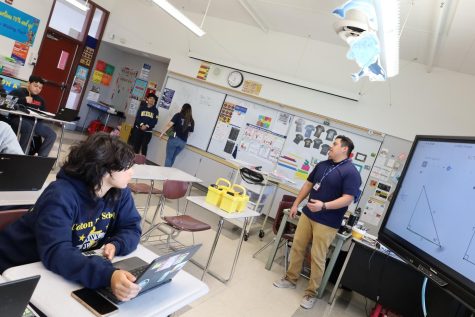Opinion: Special education resource aides deserve paid health care
Not full-time employees, special education aides face issues with health care
Sonia Hernandez has worked with students in special education for 23 years. Why does she have to work two jobs?
Sonia Hernandez has been working as a special education resource aide for 23 years. She is dedicated, passionate, and experienced.
Currently, she supports Special Day Class students in Mr. Hackworth’s class at Colton High, whom she has been working alongside for the last 12 years. Sometimes she is called out of his room to cover other aides assigned to specific students so they can take breaks, or eat lunch.
She loves her kids and all their quirks. She enjoys keeping in touch with them after they graduate. She loves her job.
Yet, Sonia comes to work tired every day.
Sonia has to work two jobs because being an aide in Colton Joint Unified School District is only a part-time job. While teachers work seven and a quarter hours, resource aides are only contracted for six, not even the length of a school day.
This means that for an employee of 23 years, like Sonia, she does not qualify for district-paid health and dental insurance. Since aides are employed part-time, medical and dental insurance is offered, but not at the full rate, and a monthly deduction is taken from their pay.
Like many part-time employees across the state of California, Medi-Cal could be an option. However, aides get paid too much to qualify for Medi-Cal but don’t make enough to pay for district insurance.
During the Obama administration, shortly after the health care mandate was put into law and people were fined for failing to have medical coverage, Sonia was fined by the IRS.
She is still paying it off.
Are special education aides being treated fairly? Sonia is not the only one who has to work a second or third job because the district doesn’t employ them full time.
Connie Holt is another part-time aide at Colton High. The district offers health insurance, but she pays a hefty premium. Fortunately for her, she lives in a two-income household, so she isn’t struggling like some.
Holt is the exception here. Not everyone has the same benefit of being a two-income household.
This wouldn’t be a problem if the school district offered to employ its aides full time, allowing them to qualify for medical insurance and other benefits.
Colton Joint Unified is not the only school district that engages in this practice. Jessica Bourland worked for the Yucaipa-Calimesa Unified School District for a year, two years ago as a special education aide and was treated similarly. She was paid to work six hours a day, with health and dental insurance premiums deducted from her monthly paycheck.
“Working part-time paid my bills,” Bourland said, “but I didn’t have a whole lot left over to do a lot of extra stuff. Had I lived on my own, I definitely wouldn’t have been able to afford it.”
Bourland moved to Idaho in September 2020, not because of work, but for personal reasons. She found a better job, with better pay and better benefits.
Resource aides deserve better. While they often do not have the same level of education as teachers, they stand side-by-side with them, working with students facing the greatest need. If their needs are not taken care of, how can we be sure the needs of our students with disabilities are?
Recently, the CHS Publications Department experienced a major theft as over $20,000 in photography equipment was stolen from our studio over Spring Break. This included all cameras. Any amount you donate will help rebuild our program. Thank you!

Briana McMullen is a junior at Colton High School. Some of her interests include skating (both rollerskating and skateboarding), reading and hanging out...
















